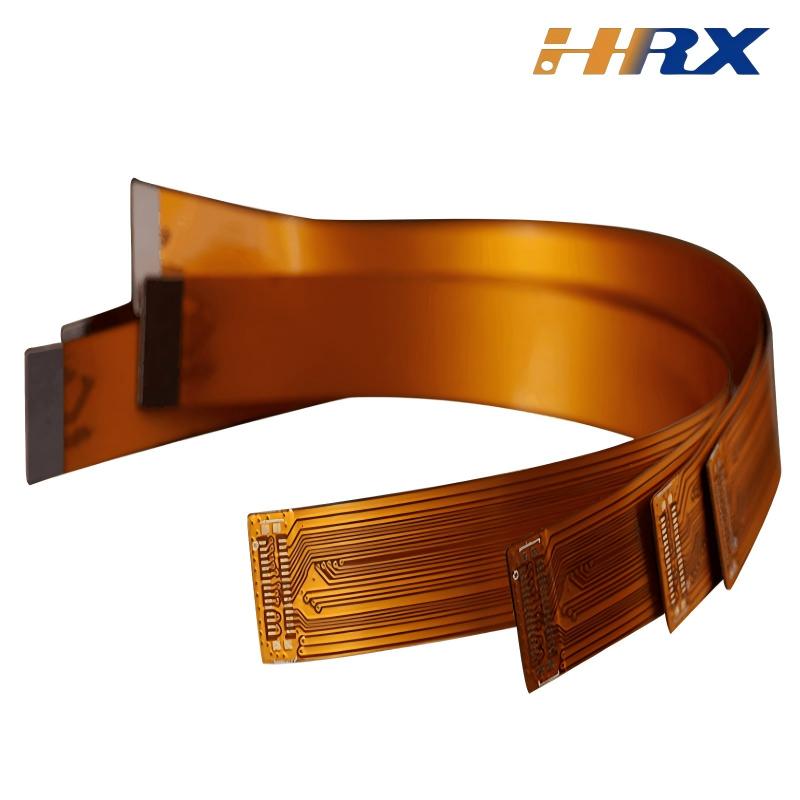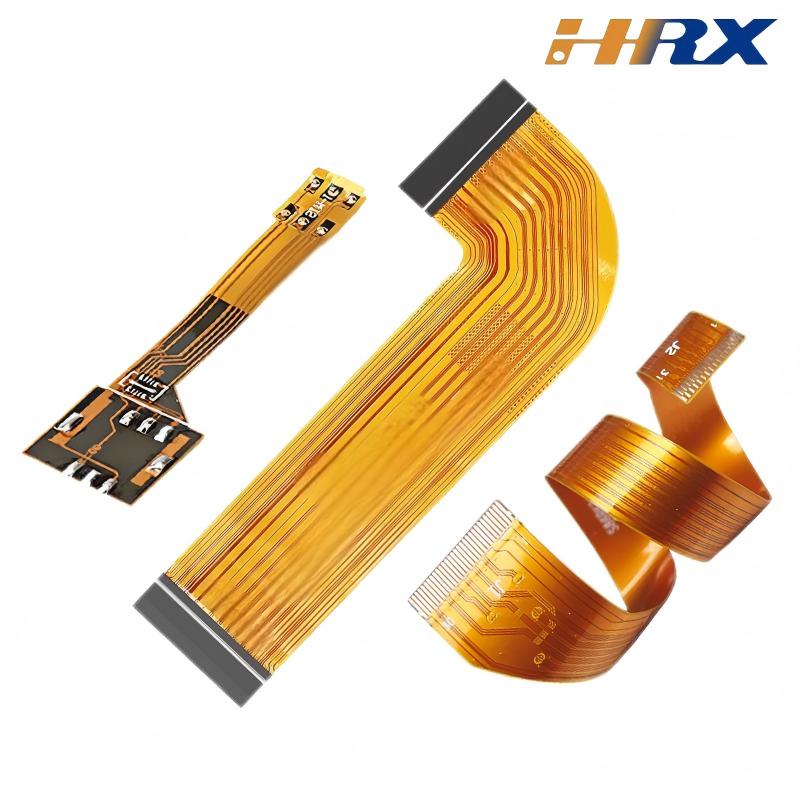Search
Quality Inspection Best Practices for Rigid-Flex PCBs in Design Validation Phase
- Jun 02,2025
-
Share
In the intricate domain of electronics manufacturing, Rigid-Flex Printed Circuit Boards (RFPCs) combine the advantages of flexibility and rigidity, catering to high - end applications in aerospace, medical devices, and consumer electronics. The design validation phase of RFPCs is a critical juncture where quality inspection sets the foundation for successful production and reliable performance. As a leading global manufacturer specializing in Flexible Printed Circuits (FPC), Printed Circuit Boards (PCB), and Rigid - Flex PCBs, Shenzhen Huaruixin Electronics Co., Ltd. understands that comprehensive quality inspection during design validation is essential for identifying potential issues early, ensuring manufacturability, and meeting industry standards.

1. Design for Manufacturing (DFM) and Design for Reliability (DFR) Reviews
DFM and DFR reviews are the cornerstones of quality - assured design validation. These reviews aim to ensure that the RFPC design can be efficiently manufactured while maintaining long - term reliability.
Layer Stackup Analysis:
Thoroughly examining the layer stackup is paramount. In Rigid - Flex PCBs, the combination of rigid layers (such as FR - 4) and flexible layers (commonly polyimide or PI) requires precise alignment. Analyzing the thickness, dielectric constants, and Coefficient of Thermal Expansion (CTE) of each layer helps prevent issues like delamination during thermal cycling. For example, a mismatch in CTE between rigid and flex layers can lead to significant stress and potential failure over time. Special attention should be paid to the interface between the rigid and flex sections, ensuring that the transition is smooth and optimized for both mechanical and electrical performance.
Bend Radius Compliance:
The bend radius in the flex regions of RFPCs is a critical parameter. According to IPC - 2223 standards, the minimum bend radius should typically be at least 2 times the trace thickness. Quality inspection during design validation involves verifying that the specified bend radius in the design meets these requirements. Failure to comply with proper bend radius guidelines can result in copper trace cracking during dynamic flexing, which is a common failure mode in FPC - based applications. Using advanced CAD tools, engineers can simulate the bending process and analyze the stress distribution in the flex layers to ensure compliance.
Via and Pad Design:
Inspection of via and pad design focuses on the manufacturability of blind/buried vias, vias - in - pads (VIP), and microvias. For instance, very small via diameters (less than 6 mils) often necessitate laser drilling, and insufficient annular rings (less than 1 mil) can increase the risk of pad lift during assembly. Quality control at this stage involves checking the via size, location, and connection to the pads to ensure that they can be accurately fabricated and will provide reliable electrical connections throughout the product's lifecycle.
2. Electrical Performance Verification
Ensuring the electrical performance of RFPCs is crucial for their functionality in modern electronic systems.
Impedance Calculation Validation:
Tools like the Polar Si8000 are employed to simulate impedance control for critical traces, such as high - speed USB4, HDMI, or RF lines. In high - frequency applications, maintaining a precise impedance (e.g., 50Ω differential impedance with a tolerance of ±10%) is essential for signal integrity. Quality inspection during design validation includes validating the impedance calculations against the design requirements. Any deviation from the specified impedance can lead to signal reflections, crosstalk, and overall degradation of the electrical performance.
Netlist and Routing Checks:
Automated Electrical Rule Checks (ERCs) are performed to identify potential electrical issues in the design, such as open circuits, shorts, or spacing violations. In flex regions, the trace - to - trace clearance should be carefully monitored, as a clearance of less than 3 mils can pose a risk of electrical interference. By thoroughly checking the netlist and routing, quality inspectors can ensure that the electrical connections in the RFPC are accurate and reliable, reducing the likelihood of electrical failures during operation.
Power Plane Analysis:
The power planes in the rigid layers of RFPCs need to be analyzed for continuity and current - carrying capacity. For power rails, a copper thickness of at least 2 oz is often required to prevent overheating and voltage drops. Quality inspection assesses the design of the power planes, including the layout, width of the power traces, and the presence of any potential bottlenecks. This ensures that the RFPC can effectively distribute power to all components, maintaining stable operation even under varying load conditions.
3. Mechanical and Thermal Feasibility Testing
RFPCs must withstand mechanical stress and thermal challenges in real - world applications, making mechanical and thermal feasibility testing an integral part of design validation.
Thermal Design Review:
The thermal design of RFPCs, especially in power - critical areas, is carefully reviewed. This includes evaluating the use of thermal vias, heat sinks, and materials with high thermal conductivity (such as ceramic - filled prepregs in rigid layers). The goal is to achieve a thermal resistance of ≤25°C/W in power - critical areas to prevent overheating, which can lead to component failure and reduced product lifespan. Quality inspection during this phase involves verifying the thermal design against industry standards and performance requirements, ensuring that the RFPC can operate within the specified temperature range.
Mechanical Stress Simulation:
Finite Element Analysis (FEA) is utilized to model the mechanical stresses in the flex - rigid transition zones during bending. By simulating the bending process, engineers can predict the strain on adhesive layers (such as acrylic or epoxy) and optimize the fillet radii to reduce stress concentrations. This helps in ensuring that the RFPC can withstand the expected mechanical forces without failure. Quality inspection focuses on validating the FEA results and ensuring that the design modifications based on the analysis are incorporated correctly.
Material Compatibility Checks:
Ensuring the compatibility of adhesives (e.g., 3M 9703), coverlays (such as PI films), and rigid substrate materials is essential. Incompatible materials can lead to chemical degradation over time, affecting the mechanical and electrical properties of the RFPC. Quality inspection includes checking the material specifications, conducting compatibility tests if necessary, and ensuring that all materials used in the design are suitable for the intended application environment.
4. Compliance and Regulatory Checks
Meeting compliance and regulatory requirements is non - negotiable for RFPCs, and quality inspection during design validation plays a vital role in this aspect.
Standard Compliance:
Verifying compliance with IPC - 6013, the Qualification and Performance Specification for Rigid - Flex PCBs, is a key task. This includes checking layer registration, surface roughness, and peel strength. Any deviation from these standards can result in failed certifications and potential product recalls. Quality inspectors carefully review the design against the IPC - 6013 criteria to ensure that all aspects of the RFPC meet the required quality levels.
RoHS/REACH Compliance:
Ensuring that all materials used in the RFPC design, such as lead - free solder and halogen - free flame retardants in FR - 4, meet environmental regulations like RoHS and REACH is crucial. Quality inspection involves reviewing material safety data sheets (MSDS) and conducting material testing if required to confirm compliance. Documentation of RoHS/REACH compliance is also an important part of the inspection process, as it provides evidence of the product's environmental friendliness.
Customer Specification Review:
In addition to industry standards, quality inspection also focuses on validating the design against customer - specific requirements. This can include bend cycle life (e.g., ≥100,000 cycles for wearable devices) or flammability ratings (UL 94 V - 0 for automotive applications). By ensuring that the design meets these specific customer needs, quality inspection helps in delivering products that satisfy customer expectations and requirements.
5. Prototype Fabrication and Validation Testing
The fabrication and testing of prototypes are the final steps in design validation, where the theoretical design is translated into a physical product and its performance is evaluated.
Prototype Fabrication Oversight:
During prototype fabrication, critical processes such as laser ablation (for flex windowing), plating thickness (20 - 30μm for vias), and coverlay alignment (with a tolerance of ±50μm) are closely monitored. Quality inspection ensures that the prototype accurately reflects the design intent. Any deviations in these fabrication processes can have a significant impact on the performance of the RFPC, and early detection and correction are essential.
Functional Testing:
Electrical Testing: Flying probe or bed - of - nails fixtures are used to test 100% of the nets in the prototype for continuity and isolation. Special attention is paid to the flex - rigid interconnects, as these are often areas prone to electrical issues. By thoroughly testing the electrical connections, quality inspectors can identify and rectify any problems before mass production.
Bend Testing: The prototype is subjected to cyclic bending (e.g., at a 5mm radius for 10,000 cycles) to measure the copper trace elongation (targeting ≥8% before fracture) and check for coverlay delamination. Microscopy is often used to inspect the flex layers for any signs of damage after bending, ensuring that the RFPC can withstand the expected mechanical stress during its operational life.
Thermal Cycling Testing: Applying - 40°C to 125°C cycles (500 cycles) helps assess the layer stability and solder joint integrity in the rigid sections of the RFPC. This testing simulates the extreme temperature variations that the RFPC may encounter in real - world applications, ensuring its reliability under different environmental conditions.
6. Design Iteration and Documentation
Based on the findings from quality inspection during design validation, design iterations are often required, and proper documentation is crucial for traceability and future improvements.
DFM Report:
A detailed DFM report is generated, documenting any issues identified during the design review process, such as minimum trace width violations or recommended stiffener placement in flex regions. This report serves as a guide for design revisions, helping engineers to make the necessary modifications to improve the manufacturability and quality of the RFPC.
Failure Mode and Effects Analysis (FMEA):
The FMEA documents are updated with the risks identified during validation, such as potential z - axis expansion in multi - layer flex - rigid boards due to moisture absorption. FMEA provides a systematic approach to identifying, evaluating, and mitigating potential failure modes, ensuring that the design is robust and reliable.
Approval Documentation:
All inspection records, including impedance plots, bend test reports, and compliance documentation, are archived. This documentation is essential for compliance with standards such as ISO 9001 or AS9100 and provides a comprehensive record of the design validation process for future reference and audits.
Conclusion
Quality inspection during the design validation phase of Rigid - Flex PCBs is a multi - faceted process that encompasses DFM/DFR reviews, electrical and mechanical testing, compliance checks, prototype validation, and design iteration. By integrating FPC - specific knowledge, advanced testing techniques, and optimized practices, manufacturers can ensure that their RFPC designs are not only innovative but also reliable, manufacturable, and compliant with industry standards. At Shenzhen Huaruixin Electronics Co., Ltd., our commitment to comprehensive quality inspection in every phase of Rigid - Flex PCB development enables us to deliver high - performance products that meet the diverse needs of our global customers.
For customized Rigid - Flex PCB solutions with stringent quality assurance, visit www.hrxfpc.comor contact us at sales@hrxfpc.com. Let us collaborate to bring your advanced electronic designs to life with superior quality and reliability.

Let’s talk! We’ll provide the perfect solution for you!
-
 Huaruixin Electronics mainly produces printed circuit boards as the core business, to provide customers with one-stop solutions for FPC/PCB production, components sourcing and Assembly.
Huaruixin Electronics mainly produces printed circuit boards as the core business, to provide customers with one-stop solutions for FPC/PCB production, components sourcing and Assembly. - WHAT WE DO — PCB Design Solutions — Flex PCB Production — Components Sourcing — FPC&PCB Assembly
- PRODUCTS — Single Sided Flexible Circuits — Double Sided Flexible Circuits — Multilayer Flexible Cirucits — Rigid-Flex Circuits — FPC Assembly — PCB Assembly
- CAPABILITY — FPC Capability — Rigid-Flex Capability — PCB Capability — Assembly Capability
- Copyright © 2024 Shenzhen Huaruixin Electronics Co., Ltd. All Rights Reserved.
- Design By BONTOP


